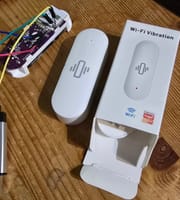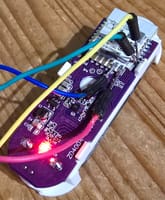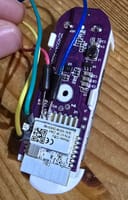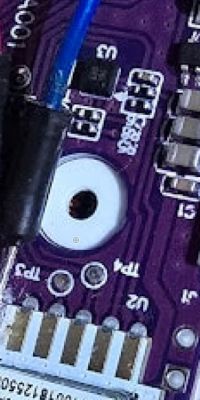Hello everyone,
Has anyone ever converted a Tuya Vibration Sensor to Openbeken?
I have flashed the device but now I am pretty clueless on how to proceed as I have not found a similar device in the tutorials.
I am not even sure there is a driver yet.
The MCU is a CBU /BK7231N and the acceleration sensor seems to be a LIS2DW12. There is at least a development board with this sensor and it seems pretty identical.
It seems the communication works via I2C and then there is an interrupt to give out the signal.
PIN8 (P8) is the button, PIN19 (P9) the LED.
Pinning out the sensor is difficult but TP4 is Pin10(P6), TP3 is Pin11 (P26) and i am measuring 10K from TP1 to PIN18 (CEN)
Maybe someone has already done a similar device or it is not as hard as I assume to make it work.
Any help is appreciated.
Sascha
Has anyone ever converted a Tuya Vibration Sensor to Openbeken?
I have flashed the device but now I am pretty clueless on how to proceed as I have not found a similar device in the tutorials.
I am not even sure there is a driver yet.
The MCU is a CBU /BK7231N and the acceleration sensor seems to be a LIS2DW12. There is at least a development board with this sensor and it seems pretty identical.
It seems the communication works via I2C and then there is an interrupt to give out the signal.
PIN8 (P8) is the button, PIN19 (P9) the LED.
Pinning out the sensor is difficult but TP4 is Pin10(P6), TP3 is Pin11 (P26) and i am measuring 10K from TP1 to PIN18 (CEN)
Maybe someone has already done a similar device or it is not as hard as I assume to make it work.
Any help is appreciated.
Sascha










